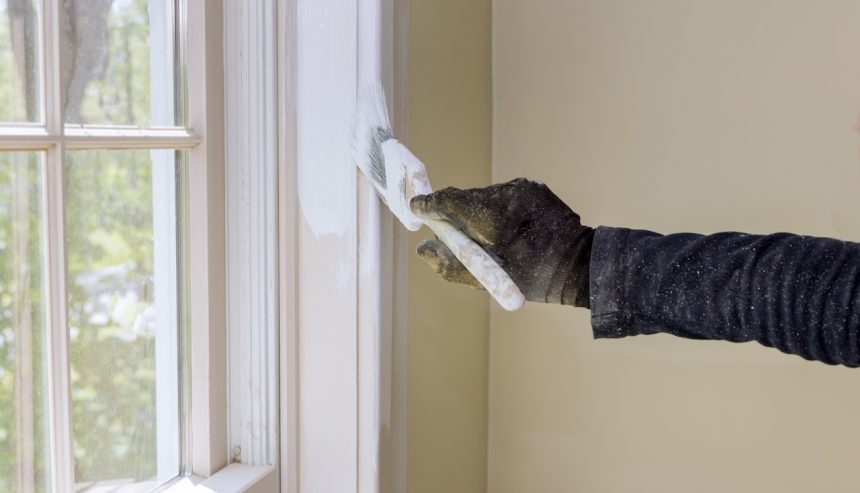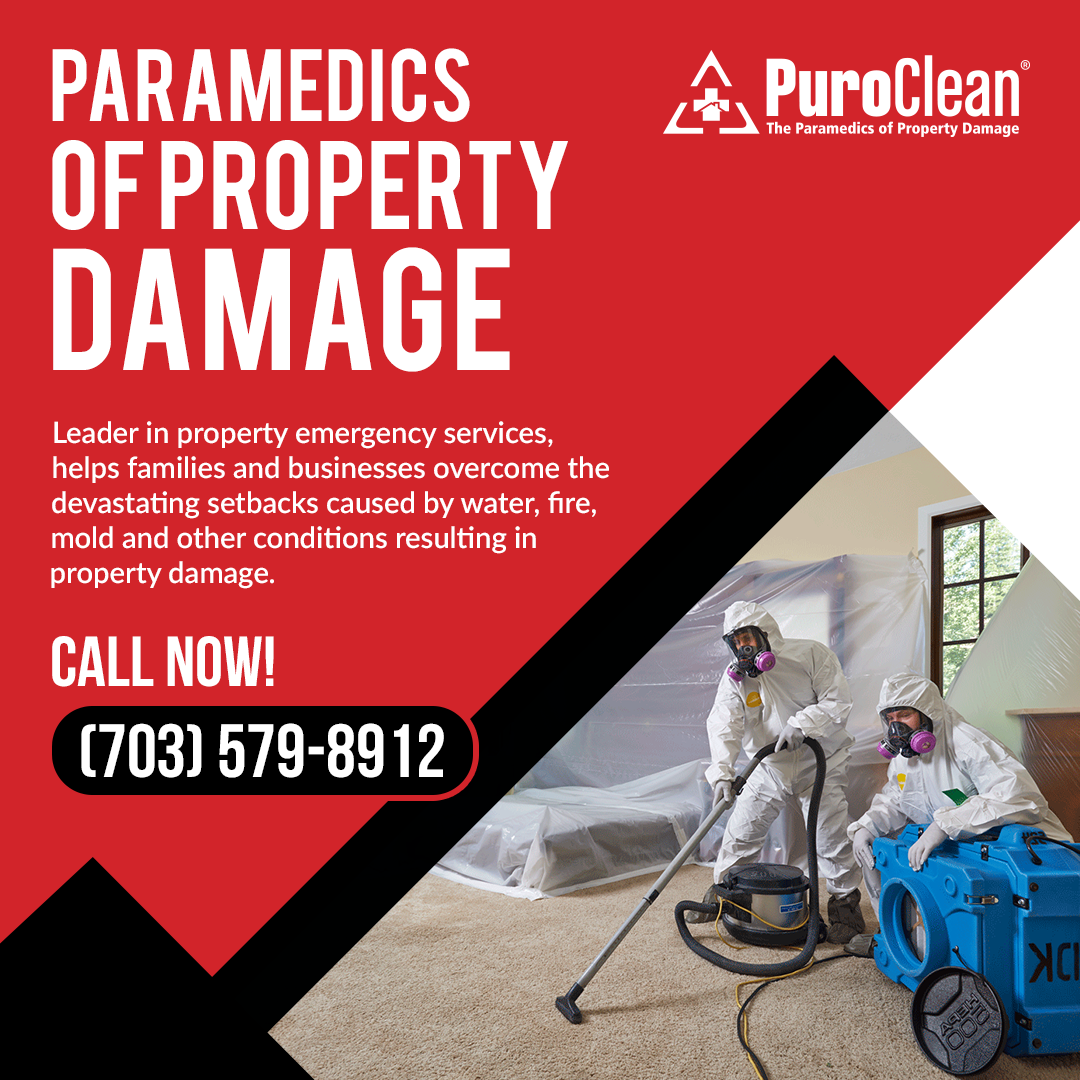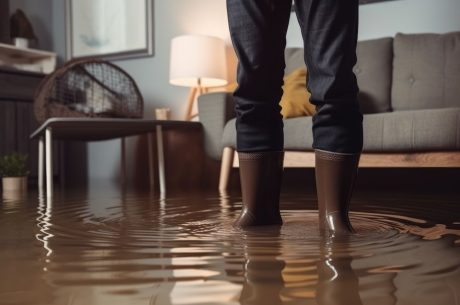Mold is a persistent problem in many homes and businesses; sometimes, it gets painted over intentionally or unknowingly. While a fresh coat of paint may seem like a quick fix to hide unsightly mold, it doesn’t address the root cause of the problem. Mold can continue to grow beneath the surface, potentially causing serious health and structural issues. Knowing how to remove mold that has been painted over is essential for maintaining a safe environment.
We understand the dangers of hidden mold and the importance of proper mold removal. In this guide, we’ll walk you through how to identify mold that has been painted over and offer safe techniques for removing it.
How to Remove Mold That Has Been Painted Over: A Step-by-Step Guide
How to Detect Mold Under Paint
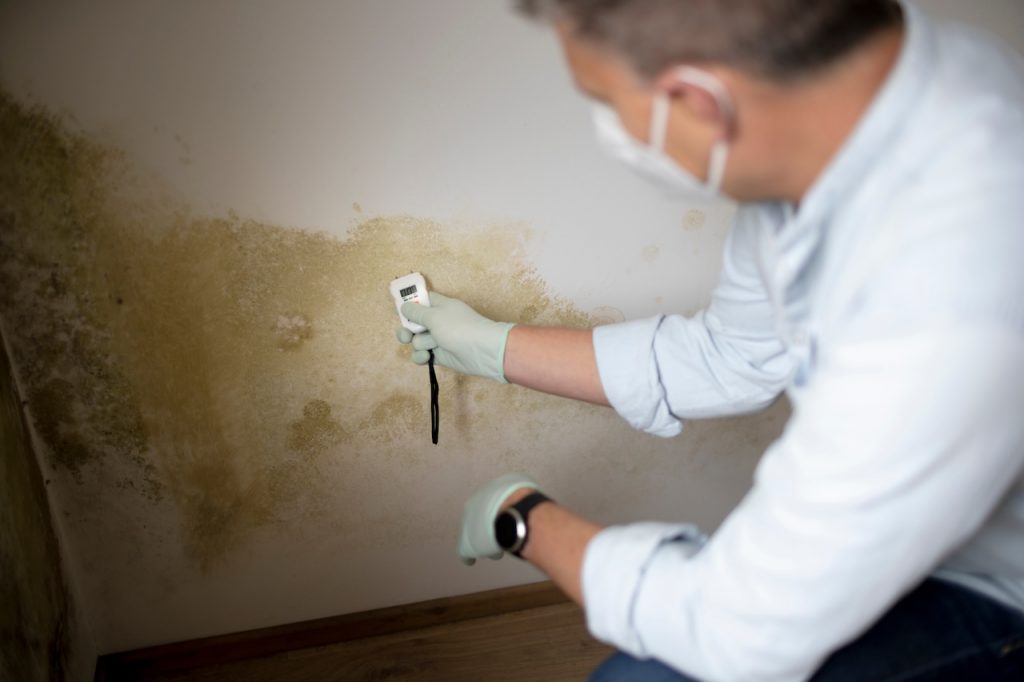
Moisture meters are invaluable when it comes to water damage detection.
When mold has been painted over, it may not be immediately obvious, but there are telltale signs that can help you identify it:
- Discoloration or stains: If you notice discoloration or yellowish-brown stains seeping through the paint, it’s a sign that mold could be growing underneath.
- Bubbling or peeling paint: Mold causes moisture buildup, leading to paint bubbling, peeling, or flaking off.
- Musty odor: A persistent musty smell in a room may indicate mold growth, even if it’s not visible.
If you suspect mold has been painted over, addressing the issue immediately is critical to prevent it from spreading.

Be wary of musty odors, discoloration, and bubbling and/or peeling.
Safe Removal Techniques for Mold Painted Over
Once you’ve identified mold beneath the paint, taking the right steps for safe removal is important. Removing mold improperly can release harmful spores into the air, worsening the problem and posing a health risk. Here’s a step-by-step process for tackling mold removal:
- Prepare the Area: Wear proper protective gear, including gloves, goggles, and a mask, to avoid direct contact with mold spores. Ensure the area is well-ventilated by opening windows or using fans.
- Remove the Paint: Carefully use a scraper or sander to remove the paint from over the moldy area. This exposes the mold for proper treatment.
- Treat the Mold: Apply a mold-killing solution, such as a mixture of water and bleach (in a ratio of 1:10), or a commercial mold remover. Allow the solution to sit for at least 15 minutes before scrubbing the area with a brush. Be sure to clean all affected surfaces to ensure complete mold removal.
- Dry Thoroughly: Mold thrives in damp environments, so it’s crucial to dry the area thoroughly after cleaning. Use fans or dehumidifiers to remove excess moisture and prevent mold from returning.
- Dispose of Contaminated Materials: To prevent cross-contamination, any materials that come into contact with the mold, including rags, brushes, and paint scrapings, should be appropriately disposed of in sealed plastic bags.
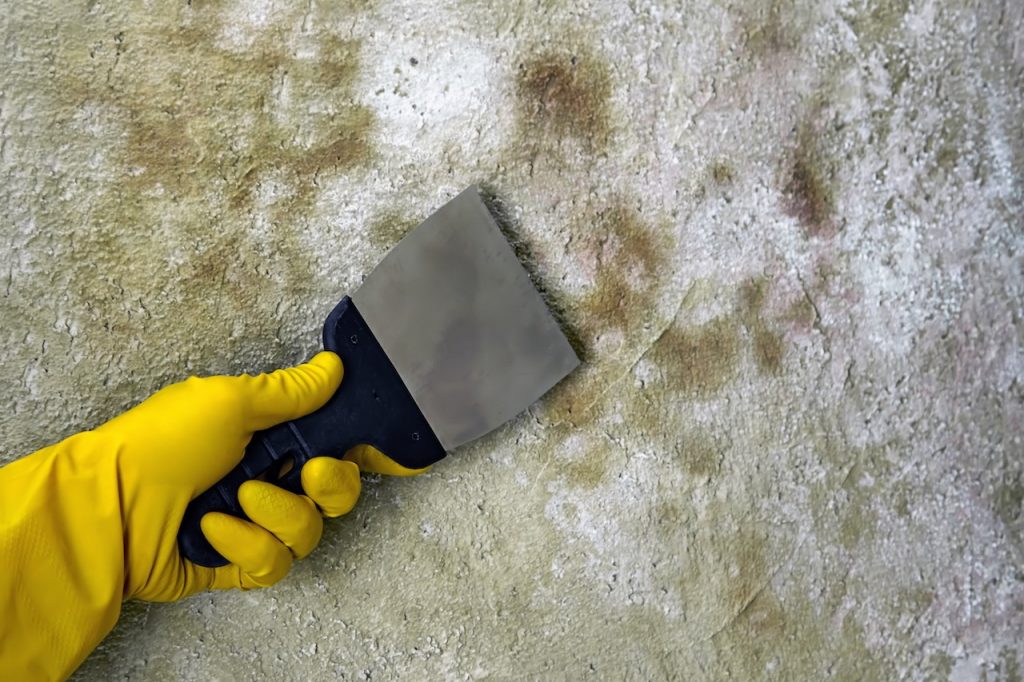
It is important to remove the paint down to the base before attempting to reapply a new coat.
Repainting After Mold Removal
Once the mold has been completely removed and the area is dry, you can safely repaint the surface. However, it’s important to follow these steps to prevent mold from reappearing:
- Apply a Mold-Resistant Primer: Before painting, use a mold-resistant primer to create a barrier that helps prevent future mold growth.
- Use Mold-Resistant Paint: Consider using paint that contains antimicrobial agents, which can deter mold from growing on the surface.
- Ensure Proper Ventilation: If the mold issue was caused by poor ventilation, especially in areas like bathrooms or kitchens, consider improving airflow by installing exhaust fans or dehumidifiers.
Professional Mold Assessment Options
While removing mold on your own is possible for small areas, large-scale mold problems or mold growing for an extended period may require professional help. A professional mold assessment can thoroughly evaluate your property to determine the extent of the mold damage and the best course of action.
Our certified technicians specialize in mold remediation and have the expertise to handle even the most severe cases. Using advanced equipment, we can detect mold that isn’t visible and implement comprehensive mold removal and moisture control solutions to ensure your property is mold-free.
This FEMA webpage, Mold: Problems & Solutions, is a great starting place for assessing the damage.
Sterling’s Mold Removal Experts
If not properly removed, painted-over mold can lead to long-term damage. At PuroClean of Sterling, we specialize in safe and effective mold removal services, helping you restore your property to a healthy condition. Our team has the experience and tools to remove hidden mold and ensure it doesn’t return.
For more information on mold removal services, visit PuroClean Emergency Restoration Services or call (703) 579-8912. Don’t wait—contact our experts today to ensure your home or business is mold-free.
